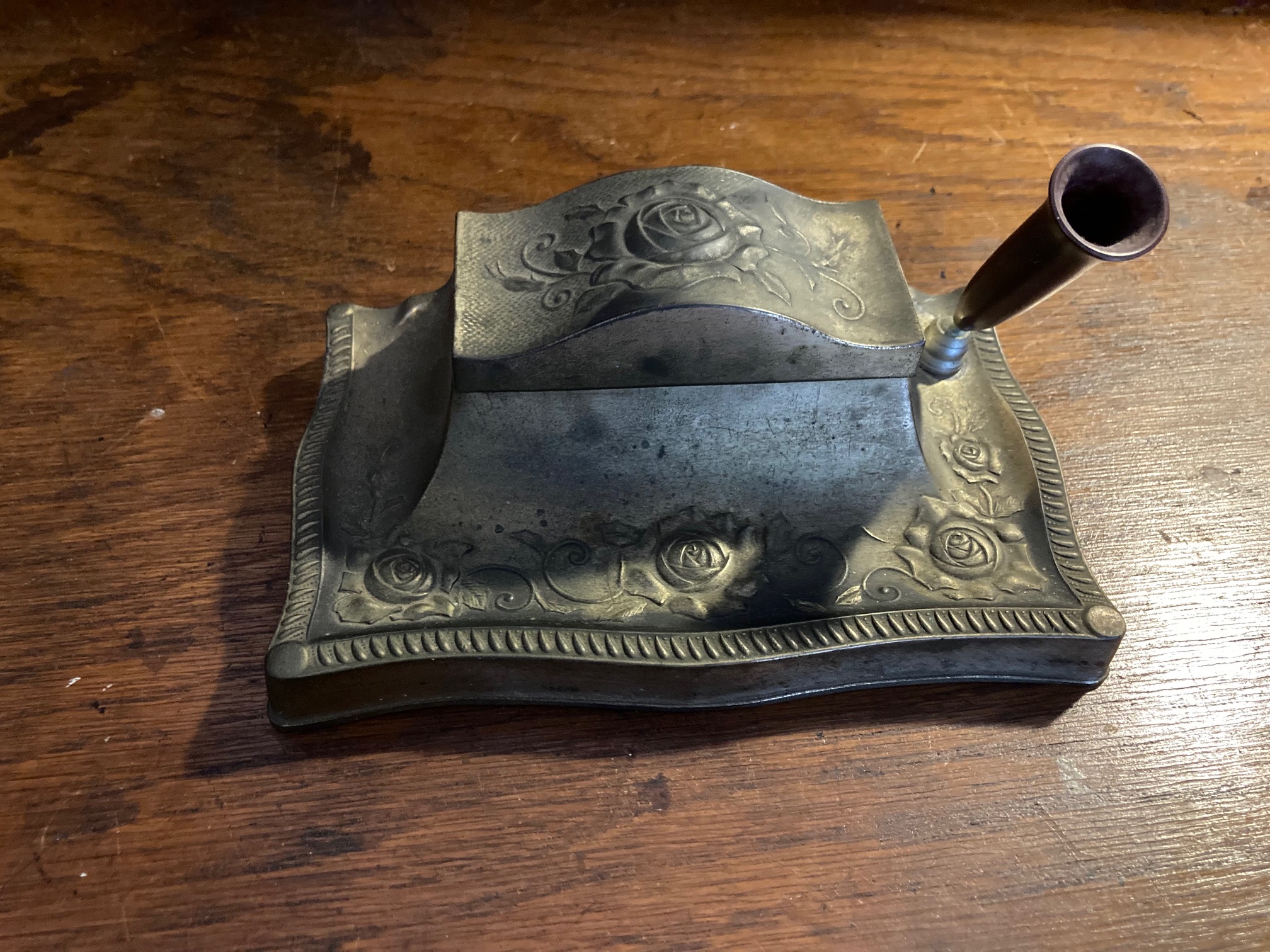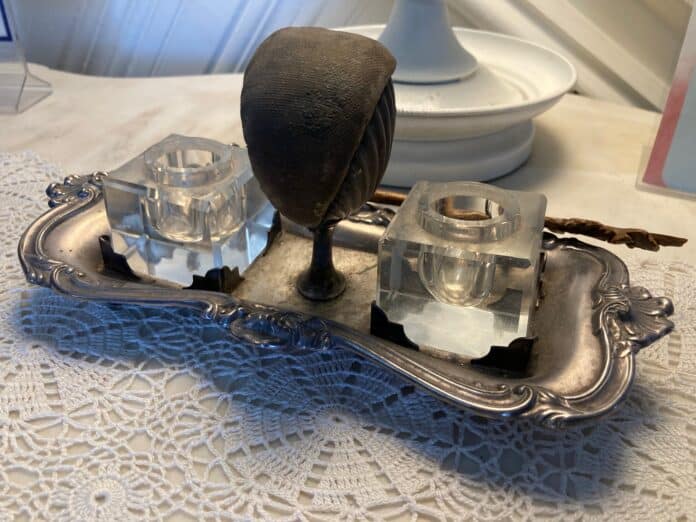Ink wells are a thing of the past. The dip pen with an interchangeable tip called a nib replaced the quill—a sharpened feather. Then came the fountain pen and the ballpoint pen and now gels and felts. Who even writes notes anymore without a computer? The ink wells at the May-Stringer Museum come from a time when people did write to each other. Gossip and comings and goings abounded. A handwritten invitation to a social event was expected if not required. The very formal ink well set found in the foyer of the museum is a James W. Tufts, quadruple silver plated platter. It consists of two heavy glass ink wells, a dip pen holder, and a unique blotter set in a center shell. Ink wells were usually glass, but the exterior case may have been made of other materials. How lucky we are when we get a handwritten note and how very special to receive one if it is written with a dip pen!


